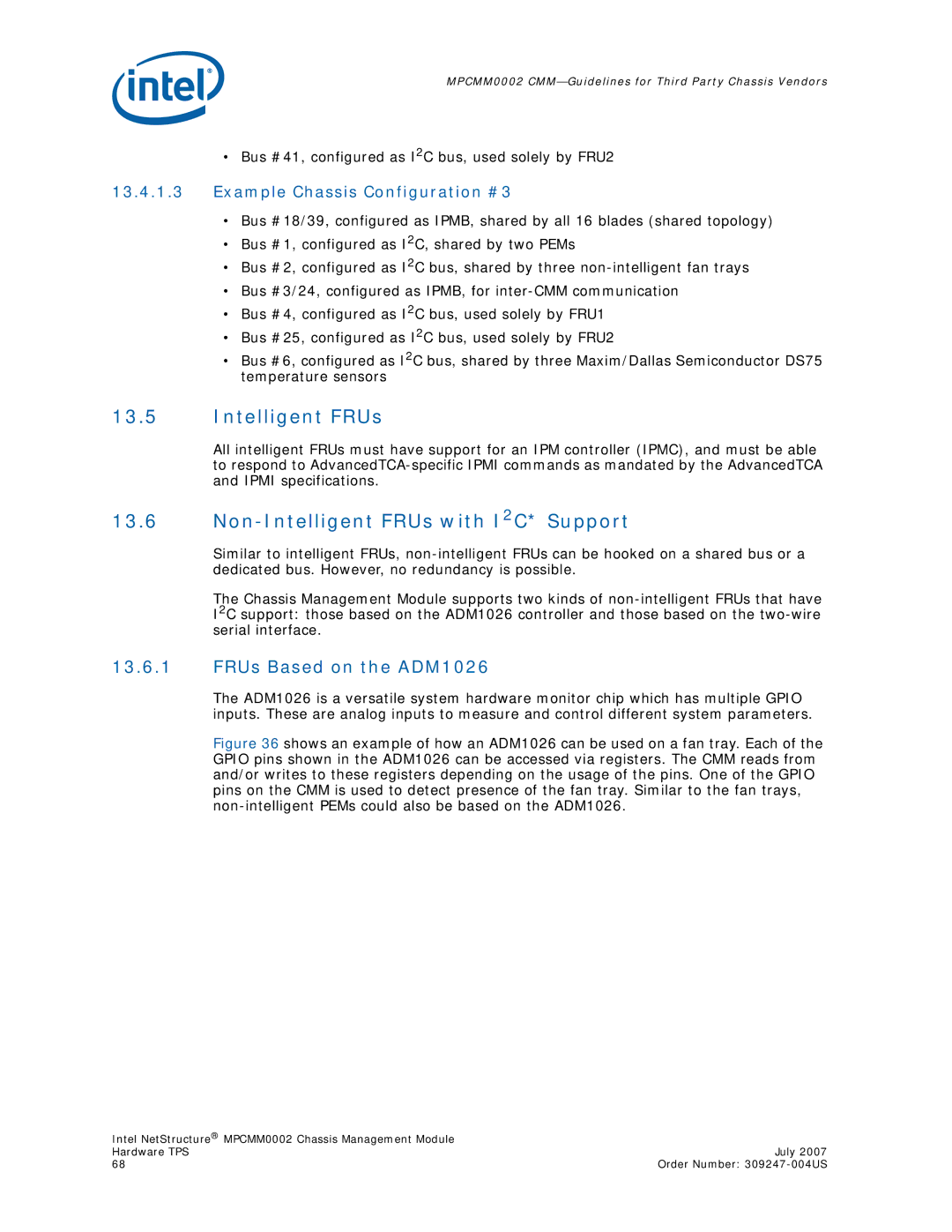
MPCMM0002
•Bus #41, configured as I2C bus, used solely by FRU2
13.4.1.3Example Chassis Configuration #3
•Bus #18/39, configured as IPMB, shared by all 16 blades (shared topology)
•Bus #1, configured as I2C, shared by two PEMs
•Bus #2, configured as I2C bus, shared by three
•Bus #3/24, configured as IPMB, for
•Bus #4, configured as I2C bus, used solely by FRU1
•Bus #25, configured as I2C bus, used solely by FRU2
•Bus #6, configured as I2C bus, shared by three Maxim/Dallas Semiconductor DS75 temperature sensors
13.5Intelligent FRUs
All intelligent FRUs must have support for an IPM controller (IPMC), and must be able to respond to
13.6Non-Intelligent FRUs with I2C* Support
Similar to intelligent FRUs,
The Chassis Management Module supports two kinds of
13.6.1FRUs Based on the ADM1026
The ADM1026 is a versatile system hardware monitor chip which has multiple GPIO inputs. These are analog inputs to measure and control different system parameters.
Figure 36 shows an example of how an ADM1026 can be used on a fan tray. Each of the GPIO pins shown in the ADM1026 can be accessed via registers. The CMM reads from and/or writes to these registers depending on the usage of the pins. One of the GPIO pins on the CMM is used to detect presence of the fan tray. Similar to the fan trays, non-intelligent PEMs could also be based on the ADM1026.
Intel NetStructure® MPCMM0002 Chassis Management Module |
|
Hardware TPS | July 2007 |
68 | Order Number: |
